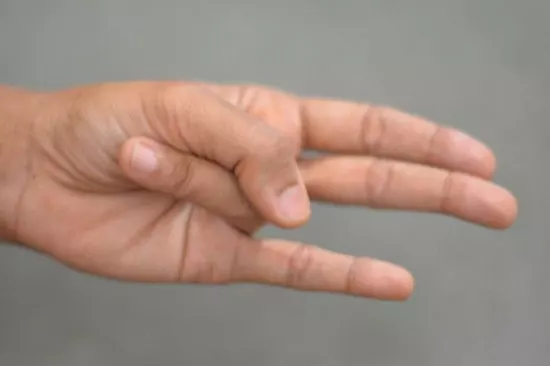“God is a circle whose center is everywhere and circumference nowhere.” ~ Voltaire
In a world filled with fear mongers peddling fear, and war mongers peddling war. In a world where the majority of the people are asleep, caught under the spell of the state and the aggrandized, over-consuming hyper-reality that it pedals.
In a world where what doesn’t really matter matters more than what really matters. It’s all too easy to fall between the cracks. It’s all too easy to remain on the sidelines. It’s all too easy to slip into a state of apathy and indifference. It’s all too easy to remain asleep.
But there is a way to put it in perspective. There is a way to turn the tables on apathy. There is a way to transform our stagnate indifference into proactive imagination. There is a way to pull the wiggling worm of our animal-angst out of the hole it has dug itself into, and give it wings.
There is a way to embrace the shadow; to help it shed its snake-like skin; to get it back into the game of life, as an ally, as our right-hand-man. There is a way to be a hero in this world, despite the cowardice of our inner-victim.
In fact, there is a way to be a hero in this world by using the cowardice of our inner-victim as fuel that launches us into a whole new level of heroism: cosmic heroism.
But first, we have to come to terms with ourselves. We have to take a deep breath and realize that we are a very young and confused species in an otherwise ancient and fine-tuned universe.
We have to be okay with the absolute fact that we are human beings – finite, impermanent, and mortal– in order to comprehend the absolute fact that we are spiritual beings – interconnected, interdependent, and reoccurring in different forms.
Man is God Asleep
“Here is a new spiritual practice: Don’t take your thoughts too seriously.” ~ Eckhart Tolle
It’s okay that we’re animals. It’s okay that we’re imperfect. It’s okay that we’re fallible and prone to mistakes. It’s okay that we’re spiritual beings trapped in human skin.
It’s okay that most of the time we’re spiritually asleep. It’s even okay when we fall back to sleep after having been spiritually awakened. It’s okay that we are individuals attempting to individuate. It’s okay that we are independent agents becoming an interdependent whole. It’s even okay when we fail. Failure is just a steppingstone. One of many.
Between man and God there is a veil. And it’s okay that there is a veil. We are as much the veil as we are the human being attempting to see through it as we are the God attempting to forget it already has.
Like Rumi said, “The ego is a veil between humans and God.” And that’s okay. It must be. On the path toward enlightenment, the ego is just as important a tool as the soul. We must be capable of finding leverage between both in order to individuate the ego and self-actualize the soul.
Between dreaming and wakefulness there is a third thing: metamorphosis. Sometimes metamorphosis requires a wake-up call. Sometimes it requires a call to adventure. Sometimes it requires an utter upheaval of our current lifestyles. Sometimes it’s as simple as seeking out solitude and meditation.
Sometimes it’s all of the above. But always it requires imagination and reason. Whether before or after, it requires creative thought and the ability to reasonably grow along with our burgeoning comfort zones.
From victim of the world to becoming the world, our comfort zone stretches and our courage grows. Eventually our comfort zone subsumes not only the world, but reality itself. We free ourselves. Through the almighty courage of our spiritual power trumping religious/political/nationalistic pseudo power, we go from victim of the cosmos to becoming the cosmos.
We open the paradigm and ascend. We become the tug-of-war between flesh and spirit; as much in love with our roots as we are in love with the infinite womb of the cosmos. We become eternal, infinite, connected with everything, realizing that we always were. We have pierced the veil. Man as God asleep has become God as Man awakened.
God is Man Awake
“Earthly things must be known to be loved. Divine things must be loved to be known.” ~ Blaise Pascal
Our mind’s eye is the cosmos looking through us, using us as meaning-bringing creatures with the power to bring meaning to a universe otherwise devoid of it.
Thus bringing about “Meaning” itself, which we alone are responsible for. Wow! What a power to wield. And what a responsibility to carry.
Gazing into the universe through our unique perspective, the universe – otherwise infinite, otherwise interconnected, otherwise meaningless – buckles and bends into finite shapes, time-wrought specialness, and powerful notions of compassion, apathy, and love.
Flowers become colorful bundles of atoms unleashing species-specific perfumery. Sunsets become dazzling layers of cosmos-upon-cosmos juxtaposed with our hearts layers of memory-upon-memory, stringing it all together through a medium called Time. Where night becomes day, sun becomes moon, birth becomes death, and rebirth is hidden in between.
God is man awake when understanding the former puts everything into proper perspective. When it is understood that meaning, thought, and even imagination, is all just temporary, all subject to evasive Truth and tricky vicissitude, all merely impermanent, but all the more beautiful because of that fact.
God is man awake when religious pseudo power is trumped by authentic spiritual power. When Death becomes the teacher of Life. When Pain becomes the teacher of Forgiveness. When Non-attachment becomes the teacher of Love & Courage. When Absurdity becomes the teacher of Humor.
God is man awake when hopelessness is transformed into adventure, despair into a reason for excellence.
When one understands, as Pablo Picasso did, “The situation is hopeless. We must take the next step.”
Indeed. The next step is always a becoming. The next step is an unyielding gentleness, a soft obstinacy, a loving overcoming, and a strict self-forgiveness. It’s realizing that it’s just as okay to be God asleep as it is to be Man awake.
It’s just as okay to be a worm in hiding (healing) as it is to be a God rising (enlightening). It’s always both. It’s an intermittence. It’s a breathing in and breathing out. It’s inhaling godliness and exhaling creatureliness, and vice versa.
It’s seeking, ever-seeking, for that permanent impermanence, that self-same eye that God sees us through and through which we see God. It is lower-case discovery as well as upper-case Discovery.
It’s consistent and persistent self-discovery turned self-overcoming. It’s heeding the wise words of Rumi: “Be relentless in your looking, because you are the one you seek.”
Image source:





















